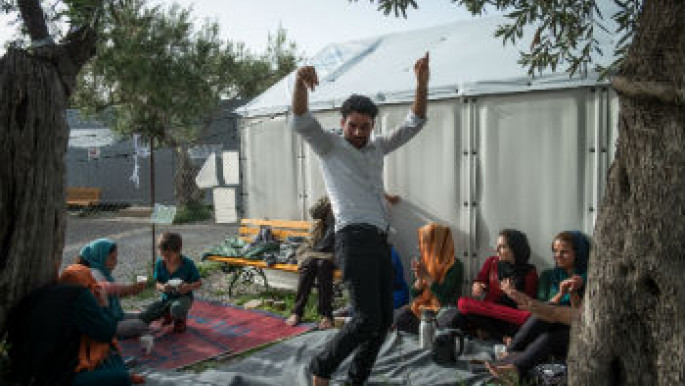
Take this waltz: Dance as resistance in post-Reina days
I always like to ring in the New Year by attending the annual Salute to Vienna concert on New Year's Day.
Started 20 years ago by Hungarian promoter Attila Glatz - who heard his first Neujahrskonzert as a child in Communist-era Budapest and now exports it internationally - it's a lovely, languid way to let the New Year in.
A celebration of all things Strauss, the travelling show elevates the waltz to cult status. As I watched the lithe dancers from the ballet of the Ukraine and heard Viennese tenor Martin Piskorski sing Dein ist mein ganzes Herz, it was easy to forget that the waltz was once considered a revolutionary dance.
The closeness of male and female dancing partners earned it much disdain from more conservative quarters. Now, of course, it's often relegated to the realm of schmaltz, but in this age of pax Americana and pop culture schlock it makes the fruits of the Austro-Hungarian Empire seem rather appealing.
It's funny how dancing - such an essential expression of our humanity - can get demonised by different groups and in different eras.
I pondered this as I returned home from the concert and heard news of the terrible attack by a gunman on a disco in Istanbul. Dancing at the Reina on the European shores of the Bosphorus - the waterway that once marked the separation between the old Austro-Hungarian and Ottoman empires - was somehow equated with the bombing of civilians in Syria and "the decadence of the west", and the shooting of dancers named as a form of "revenge".
As someone whose lineage - like that of the Bosphorous istself - is spilt between Europe and the Middle East, I have to say that puritanism is not unique to either shore.
My great-grandmother, born in the Midlands, had a Methodist preacher father who forbade dancing, and the 19th century "holiness movement" spawned by John Wesley that prohibits not only dance but alcohol, gambling and cinema is still popular with American evangelicals and boasts 12 million adherents.
And as someone whose first book on Iraq was called Dancing in the No Fly Zone, I say it's high time to take back the narrative and celebrate dance for what it is - an expression of what it means to be human - and more often than not - an act of resistance.
The Iraqis who inspired my book's title danced the chobi at a Baghdad wedding less than 24 hours after Clinton's 1998 Desert Fox three-day bombing campaign, and were part of dance's long history as an act of defiance and solidarity. They welcomed me into their circle, even as my Arabic faltered - but my hands and hips instinctively knew the right moves.
 |
|
| People have always needed dance to survive the toughest of times [Anadolu] |
Consider the Zapotec dance of the feather, both a documentation of and resistance to la conquista, still performed as a symbol of cultural and physical survival in Oaxaca.
Or the 2004 album by French ska/reggae band called Dances of Resistance that opens with a song called Contra La Guerra Greva General (Manif contre la guerre en Irak).
The Middle East, of course, has a rich history of dance as both cultural and political expression. In Palestine, for example, the El-Funoun Popular Dance Troupe was established in 1979 with a mission to revive Palestinian music and dance as an emphatic manifestation of national identity, defying Israeli "erasure".
More recently, Tunisian dancers, threatened by armed Islamists in the wake of the 2011 Revolution, took back the streets of Tunis with random acts of dancing.
And Syria, in whose name the terrible attack on the discotheque on the Bosphorus took place, has a proud history of dance.
While the trauma of being a refugee took the life of talented Syrian-Palestinian dancer Hassan Rabeh last summer, others, like dancer Ahmad Joudeh,who went from a refugee camp to the Dutch National Ballet, have inspiring stories of resilience and survival in the face of great odds.
In 2014, young dancers living in the Darashakran refugee camp in the northern Iraqi region of Kurdistan released their own interpretation of Pharrell Williams'Happy. And when newly arrived Syrian refugees came to Canada, one of the first things they wanted to do - besides eating and talking with their relatives - was to dance.
Intriguingly, in light of my new year's day Salute to Vienna concert, Syrians also have a passion for ballroom.
It's time to take back dance as a form of counter-terror. In these dark days, when the bricks of Nimrud, recently liberated from the Islamic State group, are left unguarded and taken by the displaced to build new homes - and fascists everywhere are empowered by faux populisms, it often feels like the last dance of civilisation itself.
Let dance become once again an instrument of resistance to all who would destroy human culture.
As Leonard Cohen wrote in Take this Waltz - his adaptation of a Garcia Lorca poem:
Now in Vienna there are ten pretty women
There's a shoulder where Death comes to cry
There's a lobby with nine-hundred windows
There's a tree where the doves go to die
Oh my love, oh my love
Take this waltz, take this waltz
It's yours now, it's all that there is
Garcia Lorca was killed by fascists. He wrote in the original Little Viennese Waltz:
and in the dark wake of your footsteps,
my love, my love, I will have to leave
- violin and grave, the waltzing ribbons
Follow Hadani Ditmars on Twitter: @HadaniDitmars





 Follow the Middle East's top stories in English at The New Arab on Google News
Follow the Middle East's top stories in English at The New Arab on Google News


